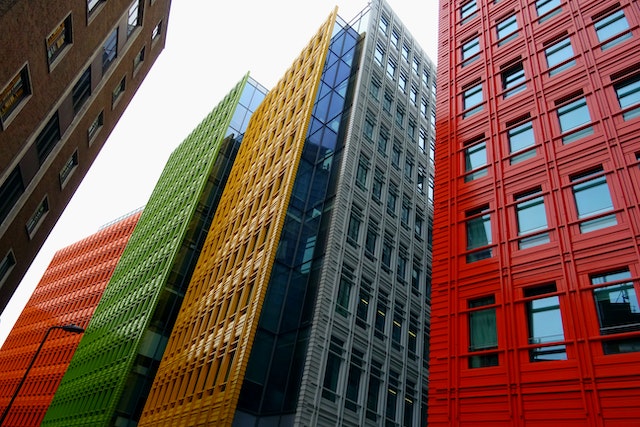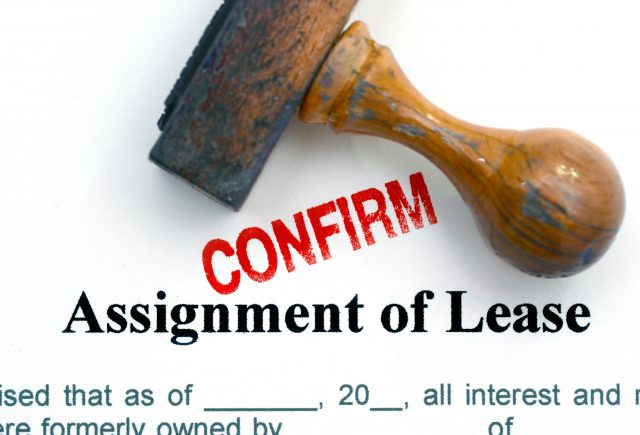Posts Tagged ‘commercial property’
July 8th, 2024

The United States is home to one of the world’s largest commercial real estate markets, accounting for nearly 40% of all real estate globally. The latest data from 2024 show that this market generates revenues in excess of $1 trillion, and 16 of the world’s 30 most competitive commercial property markets are located in the United States.
Early 2024 data show that the average asking price per square foot for US offices stands at $37. Retail averages out to $23 per square foot, and industrial space comes in at just under $8 per square foot. However, there are significant variations in average prices based on location and real estate class.
Here’s a summary of the average commercial property rates in key USA cities:
Read the rest of this entry »
Tags: Business Advice, commercial property, Commercial Real Estate, Office Market Trends, Office Rental, Office Space Trends and Forecasts, Office Talk, prices, statistics
Posted in Office Space Forecasts and Trends, Real Estate, Trends and Statistics | No Comments »
Add to: Del.icio.us | Digg
May 24th, 2024

Thanks to its academic status and thriving innovation scene, Boston is considered one of the top business hubs on the East Coast. In particular, the city and the surrounding areas have become the destination of choice for many startups, not only due to the availability of talent and funding, but also given the quality and diversity of office accommodation options.
In this article, we offer detailed insights into the cost of renting office space in Boston, district by district.
Office market trends in Boston
Over the past decade, the Boston office space market has seen fluctuating performance, witnessing shifts in demand and supply. Initially, the growth of the tech and life sciences sectors contributed to the expansion of the office market, with the development of new and modern spaces that could accommodate the requirements of these occupiers. Low vacancy levels translated into increasing asking rates, in particular in areas like East Cambridge and Sommerville, while other tenants were pushed out of the market as they couldn’t always compete with the budget of occupiers like MIT, Novartis, and Google.
Read the rest of this entry »
Tags: Boston, Business Advice, commercial property, Commercial Real Estate, Office Market Trends, Office Rental, Office Space Trends and Forecasts
Posted in Boston, Business Districts, CBD's, CRE, Market Overviews, Office Planning, Office Space Forecasts and Trends | No Comments »
Add to: Del.icio.us | Digg
May 17th, 2024

In the intricate world of commercial real estate, few topics can be as consequential—yet often misunderstood—as depreciation. At its core, depreciation represents the gradual wear and tear of a property, reflecting its diminishing value over time. While this concept might seem straightforward, its implications ripple throughout various aspects of the industry, impacting not just the physical bricks and mortar, but the financial sheets and investment calculations of those involved.
For property owners, understanding depreciation is paramount. It influences their annual tax liability and shapes the long-term financial strategy behind their real estate holdings. Investors, on the other hand, often scrutinize depreciation schedules and methods to determine the potential returns of their ventures. As for lessees, while they might not directly deal with depreciation calculations, the underlying factors that cause depreciation can indirectly affect lease terms and rental rates.
This article delves into the nuances of commercial real estate depreciation, dissecting its mechanics and significance, especially within the context of the US market. Our goal is to shed light on this pivotal subject, equipping our readers with the knowledge to make informed decisions, whether they’re exploring new office spaces, considering an investment, or simply seeking to expand their understanding of commercial real estate dynamics in the USA.
Read the rest of this entry »
Tags: Business Advice, commercial property, Commercial Real Estate, Office Rental, Office Space, Office-tips
Posted in CRE, Entrepreneurs, Finance & Tax, Office Planning, Office Rental, Real Estate | No Comments »
Add to: Del.icio.us | Digg
May 10th, 2024

As one of the world’s leading business locations, New York City attracts office-based businesses with a wide range of requirements and budgets. In this article, we offer an in-depth analysis of the costs associated with renting office space in the Big Apple, so you can make the best decision when establishing your business footprint in the city.
Understanding the factors that influence office space costs
The cost of leasing office space in New York City‘s office market is influenced by a number of factors, including:
– Location: Although Manhattan still tops the list in terms of prestige, other areas fare better for ease of commute, as is the case of Brooklyn, and their popularity is reflected in rising prices when compared to the rest of the New York office space stock.
Read the rest of this entry »
Tags: commercial property, Commercial Real Estate, Manhattan, new york, Office Rental, Office Space
Posted in CBD's, CRE, Manhattan, New York, Office Planning, Office Rental, Office Talk | No Comments »
Add to: Del.icio.us | Digg
January 31st, 2023

The use of color in an office space has a significant impact on the atmosphere of the workplace and on those that occupy it. The right combination of colors can enhance the overall design, improve the functionality of the space, and create a more positive and productive work environment.
According to the Institute for Color Research, within 90 seconds of first viewing, people make a subconscious judgement about a space or a product, and between 62% and 90% of that evaluation is based only on color. Additionally, in a ground-breaking study, the University of Texas discovered that when presented with different colors, varying brain responses can affect employee productivity and attitude.
In this article, we will discuss the power of color in offices by delving into the evidence surrounding color psychology, and the impact lighting and materials have on color, and how this should combine to be applied to office design. So, after reading, office interior designers, occupiers and landlords should gain some insight into how to use color to enhance the overall design of spaces, and improve the functionality and productivity of the office environment.
Read the rest of this entry »
Tags: 2023, Business, Business Advice, commercial property, Commercial Real Estate, Office Health, Office Organization, Office Space, Office-tips
Posted in Office Health, Office Renovation | No Comments »
Add to: Del.icio.us | Digg
November 15th, 2022
Sustainability practices and green buildings are more popular than ever, making a strong LEED rating extremely desirable to both building owners and prospective occupants. In this blog post, we’ll take a closer look at what the LEED certification system is, why it matters, and some of the benefits you can expect from going through the certification process.

What is LEED Certification and What Does It Stand For?
If you’re unfamiliar with the term, LEED certification is a stamp of approval from the United States Green Building Council (USGBC) that signifies that a building or renovation project meets their high standards for environmentally friendly and sustainable construction. The acronym LEED stands for Leadership in Energy and Environmental Design. To receive LEED certification, a building must score points in several different categories, including water usage, indoor air quality, energy efficiency, reduction of waste, and material selection. In addition, the building must also meet a minimum threshold for overall energy efficiency. While the standards for LEED certification are relatively high, the benefits of certification are significant. Buildings with LEED certification often enjoy lower operating costs, higher rents, and increased market value. As a result, the number of LEED-certified buildings has grown rapidly in recent years, as more and more developers seek to cash in on the green building boom.
Read the rest of this entry »
Tags: 2022, commercial property, leed, LEED certification, LEED platinum
Posted in 2022, CRE | No Comments »
Add to: Del.icio.us | Digg
November 8th, 2022

Dealing with a fixed-term lease agreement and looking to move offices or downsize? The topic of commercial lease transfer can be confusing to navigate, particularly when you are unsure of your rights and obligations under the lease.
If you’re renting a commercial property, you signed a contract at the beginning of your tenancy called a lease agreement, which contains all the details of your rights and obligations while occupying and conducting business operations at the commercial property. Your agent is required by law to give you a copy of the lease agreement if you don’t already have one.
The following article will serve as a full guide to commercial lease assignment, providing business owners with an overview of the legal considerations and elements required for an assignment of lease.
What is a Commercial Lease Assignment?
Also known as a lease transfer, a commercial lease assignment involves a tenant transferring all of their interests and rights in a lease to a new party. This new tenant will take on the responsibilities of the existing lease, including rent and any other obligations, leaving the original tenant free to exit the agreement.
Read the rest of this entry »
Tags: 2022, commercial lease assignment, commercial property, guides, landlords, lease transfer, Office Space, subleasing, tenants
Posted in 2022, Business Advice, Leases, Office Talk | No Comments »
Add to: Del.icio.us | Digg
September 15th, 2022
 The adoption of new and exciting technologies has accelerated at a previously unforeseen pace in recent years, with the impact of the rapid changes that ensued now being felt across a number of industries. In the case of the real estate industry, the proliferation of proptech (property technology) has proven to be a significant factor changing businesses around the globe. In this article, we’ll take a deep dive into proptech and assess both its current and future impact on the commercial real estate market. It should also be noted that proptech encompasses both commercial and residential real estate technology, however, for the purposes of brevity we will only be exploring the commercial proptech sector.
The adoption of new and exciting technologies has accelerated at a previously unforeseen pace in recent years, with the impact of the rapid changes that ensued now being felt across a number of industries. In the case of the real estate industry, the proliferation of proptech (property technology) has proven to be a significant factor changing businesses around the globe. In this article, we’ll take a deep dive into proptech and assess both its current and future impact on the commercial real estate market. It should also be noted that proptech encompasses both commercial and residential real estate technology, however, for the purposes of brevity we will only be exploring the commercial proptech sector.
What is Proptech?
Proptech, also known as retech (real estate tech), essentially relates to the use of data and technology to help individuals and businesses manage, buy, sell, lease, and research real estate. The concept is not new, since the real estate sector has been using tech software for a number of years to store data, arrange virtual viewings, and help connect buyers and sellers. However, proptech capabilities have massively increased in recent years due to the development of newer and more refined technologies, such as artificial intelligence, Big Data, blockchain, cloud computing, and the Internet of Things.
Recently, we’ve seen unprecedented acceleration in the proptech field, largely fueled by new consumer expectations and the rapidly changing digital landscape. Moving into 2023, lingering uncertainty and persistent market shifts are tipped to continue spurring proptech’s advancement.
Read the rest of this entry »
Tags: 2022, commercial property, coworking, flexible office space, future of work, innovation, market insights, Office Space, proptech
Posted in 2022, Technology | No Comments »
Add to: Del.icio.us | Digg
July 21st, 2021
 Office renovations can help create a more productive workplace and support a business’s branding strategy. However, these projects can have a significant impact on capital expenditure. Calculated per rentable square foot (RSF), fit-out and renovation costs went ranged from $90 to $220/RSF in 2019-20, depending on location, office size, cost of labor, and industry sector – since some businesses (such as tech companies) require fit-outs to higher and more costly specifications.
Office renovations can help create a more productive workplace and support a business’s branding strategy. However, these projects can have a significant impact on capital expenditure. Calculated per rentable square foot (RSF), fit-out and renovation costs went ranged from $90 to $220/RSF in 2019-20, depending on location, office size, cost of labor, and industry sector – since some businesses (such as tech companies) require fit-outs to higher and more costly specifications.
What follows is a breakdown of the costs involved in renovating an office in the United States. *
Construction Costs
These costs involve the removal, addition or alteration of physical elements in a building, office floor or office unit. Construction costs include materials and labor, as well as fees charged by contractors, and they serve as the biggest expense in fit-out projects – accounting for 50% to 70% of the total cost.
Average costs are $90/RSF. Depending on location, they can be as high as $139/RSF or as low as $54/RSF.
Read the rest of this entry »
Tags: Business Advice, commercial property, Commercial Real Estate, office fit-outs, Office Space, Office Talk, Office-tips, renovation
Posted in Business Advice, Office Renovation, Office Talk | No Comments »
Add to: Del.icio.us | Digg
June 23rd, 2021
 The US office market has been dramatically transformed by the changes to work practices and mobility restrictions implemented throughout the course of 2020 and early 2021. Whilst it was predicted that the market would slowly rebound starting in recent months, the demands of office occupiers will have changed substantially since the start of the COVID-19 pandemic. Below is a brief overview of the main things to look for in an office space during the second half of 2021.
The US office market has been dramatically transformed by the changes to work practices and mobility restrictions implemented throughout the course of 2020 and early 2021. Whilst it was predicted that the market would slowly rebound starting in recent months, the demands of office occupiers will have changed substantially since the start of the COVID-19 pandemic. Below is a brief overview of the main things to look for in an office space during the second half of 2021.
Office Layout
Flexible spaces
Flexibility remains a key consideration when choosing an office, not only in terms of lease terms, but also office layouts. Many office-based companies are still unsure about their ability to retain staff in the face of reduced revenue, combating this uncertainty by implementing rotating shifts or flexible work hours, two factors which have ultimately led to businesses struggling to identify the total headcount in the office at any given time.
This uncertainty will lead to an increase in demand for modular spaces that can be adjusted depending on the number of people present in the workplace. These kinds of dynamic layouts have been an option for several years, often going hand in hand with trends towards multi-functional office spaces. Some of the main elements that typify flexible workspaces include:
- Blurred indoor to outdoor transitions.
- Movable walls and room dividers.
- Lightweight or mobile office furniture.
- Adjustable or movable lighting.
Read the rest of this entry »
Tags: commercial property, Commercial Real Estate, Flexible Offices, Office Rental, office space options, Office Space Trends and Forecasts, Office Talk
Posted in Business Advice, Office Space Forecasts and Trends | No Comments »
Add to: Del.icio.us | Digg







 The adoption of new and exciting technologies has accelerated at a previously unforeseen pace in recent years, with the impact of the rapid changes that ensued now being felt across a number of industries. In the case of the real estate industry, the proliferation of proptech (property technology) has proven to be a significant factor changing businesses around the globe. In this article, we’ll take a deep dive into proptech and assess both its current and future impact on the commercial real estate market. It should also be noted that proptech encompasses both commercial and residential real estate technology, however, for the purposes of brevity we will only be exploring the commercial proptech sector.
The adoption of new and exciting technologies has accelerated at a previously unforeseen pace in recent years, with the impact of the rapid changes that ensued now being felt across a number of industries. In the case of the real estate industry, the proliferation of proptech (property technology) has proven to be a significant factor changing businesses around the globe. In this article, we’ll take a deep dive into proptech and assess both its current and future impact on the commercial real estate market. It should also be noted that proptech encompasses both commercial and residential real estate technology, however, for the purposes of brevity we will only be exploring the commercial proptech sector.  Office renovations can help create a more productive workplace and support a business’s branding strategy. However, these projects can have a significant impact on capital expenditure. Calculated per rentable square foot (RSF), fit-out and renovation costs went ranged from $90 to $220/RSF in 2019-20, depending on location, office size, cost of labor, and industry sector – since some businesses (such as tech companies) require fit-outs to higher and more costly specifications.
Office renovations can help create a more productive workplace and support a business’s branding strategy. However, these projects can have a significant impact on capital expenditure. Calculated per rentable square foot (RSF), fit-out and renovation costs went ranged from $90 to $220/RSF in 2019-20, depending on location, office size, cost of labor, and industry sector – since some businesses (such as tech companies) require fit-outs to higher and more costly specifications. The US office market has been dramatically transformed by the changes to work practices and mobility restrictions implemented throughout the course of 2020 and early 2021. Whilst it was predicted that the market would slowly rebound starting in recent months, the demands of office occupiers will have changed substantially since the start of the COVID-19 pandemic. Below is a brief overview of the main things to look for in an office space during the second half of 2021.
The US office market has been dramatically transformed by the changes to work practices and mobility restrictions implemented throughout the course of 2020 and early 2021. Whilst it was predicted that the market would slowly rebound starting in recent months, the demands of office occupiers will have changed substantially since the start of the COVID-19 pandemic. Below is a brief overview of the main things to look for in an office space during the second half of 2021.